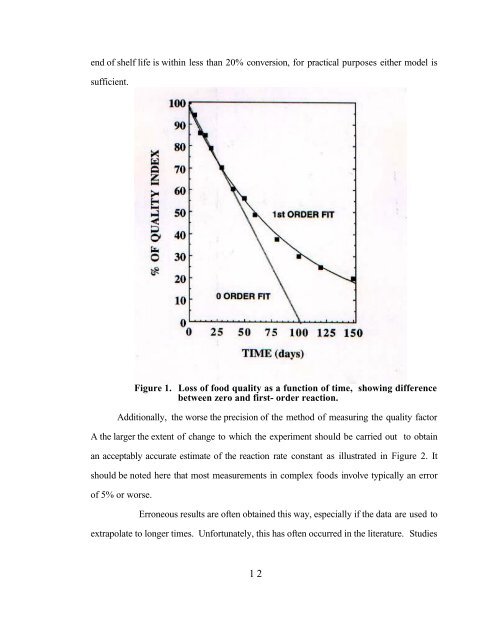the handbook of food engineering practice crc press chapter 10 ...
the handbook of food engineering practice crc press chapter 10 ...
the handbook of food engineering practice crc press chapter 10 ...
Create successful ePaper yourself
Turn your PDF publications into a flip-book with our unique Google optimized e-Paper software.
end <strong>of</strong> shelf life is within less than 20% conversion, for practical purposes ei<strong>the</strong>r model is<br />
sufficient.<br />
Figure 1. Loss <strong>of</strong> <strong>food</strong> quality as a function <strong>of</strong> time, showing difference<br />
between zero and first- order reaction.<br />
Additionally, <strong>the</strong> worse <strong>the</strong> precision <strong>of</strong> <strong>the</strong> method <strong>of</strong> measuring <strong>the</strong> quality factor<br />
A <strong>the</strong> larger <strong>the</strong> extent <strong>of</strong> change to which <strong>the</strong> experiment should be carried out to obtain<br />
an acceptably accurate estimate <strong>of</strong> <strong>the</strong> reaction rate constant as illustrated in Figure 2. It<br />
should be noted here that most measurements in complex <strong>food</strong>s involve typically an error<br />
<strong>of</strong> 5% or worse.<br />
Erroneous results are <strong>of</strong>ten obtained this way, especially if <strong>the</strong> data are used to<br />
extrapolate to longer times. Unfortunately, this has <strong>of</strong>ten occurred in <strong>the</strong> literature. Studies<br />
12














